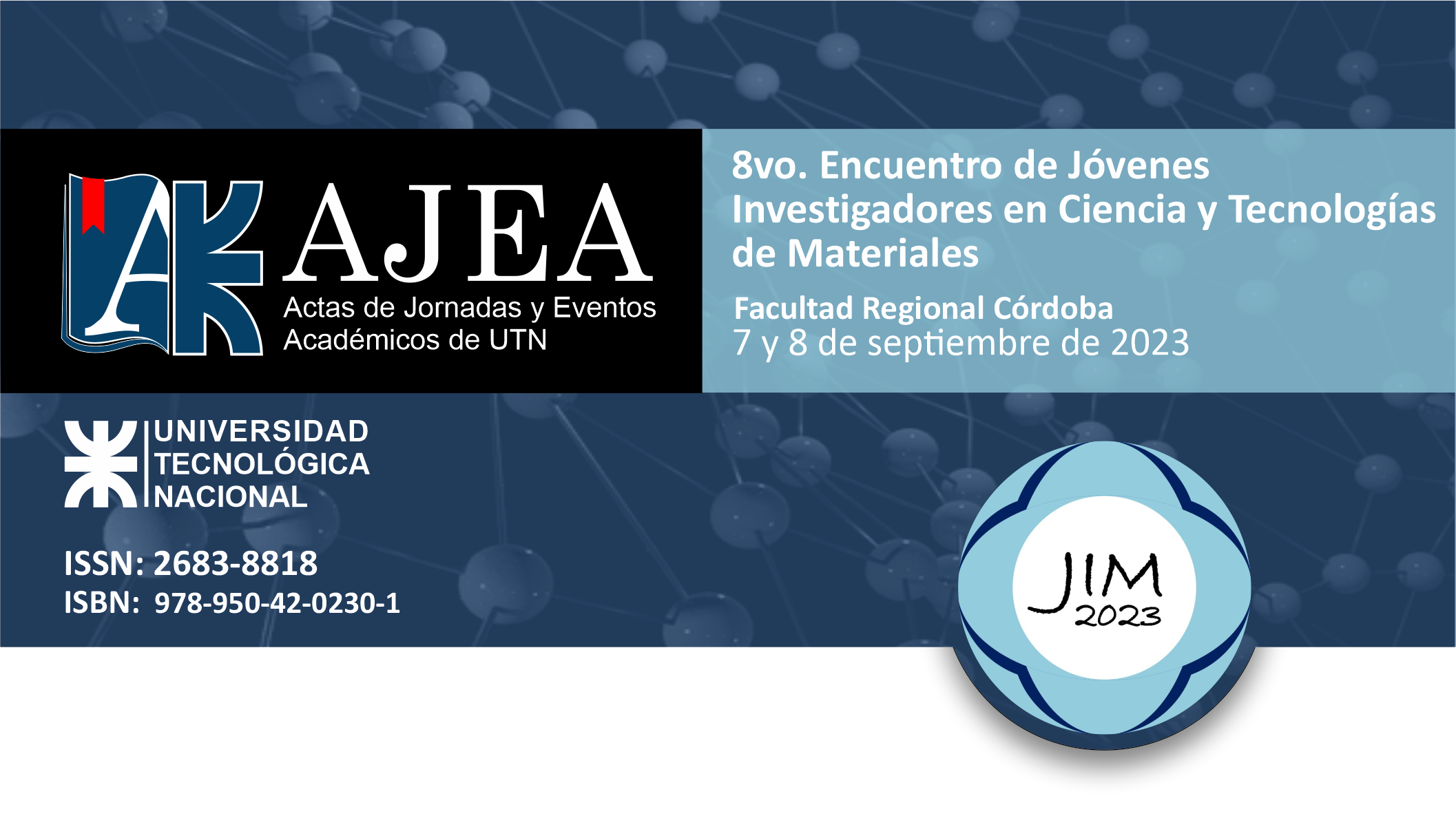Modeling of parameters and charge-discharge kinetics in Lithium-ion cells
Keywords:
Lithium-ion cells, LiFePO4, MesoCarbon MicroBeads, LiPF6, Doyle-Fuller-Newman (DFN) Model, PyBaMM, SEM, SEM-FIB, Electrochemical Impedance Spectroscopy (EIS), Discharge curvesAbstract
In the present work, the electrochemical modeling of lithium ion cells was carried out with LiFePO4 (LFP) electrodes as cathode material, MesoCArbon MicroBeads (MCMB) as anode material, a 1M LiPF6 solution in organic solvents and using a glass fiber separator. Once the model was made, various discharge curves for a Swagelok-type cell were simulated, which were contrasted with bibliographic curves for validation.
The model used is the one formulated by Doyle-Fuller-Newman, known as DFN. This model implements equations of conservation of mass and charge, ionic transport in electrolyte, and diffusion of Li in active materials, and it does so on a porous electrode, modeled as a series of spherical particles.
The tool used to implement the model is PyBaMM: Python Battery Mathematical Modeling, an open-source Python library that includes various modules with the equations to be solved and protocols to discretize and solve the modeling. To make the model, it must be fed with various parameters obtained from the characterization of real cells. In this work, the physical characterization of the electrodes is carried out by means of caliper and micrometer, electrochemical by means of the electrochemical impedance spectroscopy technique and finally a characterization obtaining superficial images by means of SEM and volumetric by means of SEM-FIB. Experimental values of the diffusion coefficients of Li in both active materials, dimensional parameters and particle size distributions that were implemented in the model were obtained.
Finally, it was possible to validate the hypotheses of the model, and simulate the aforementioned discharge curves, obtaining results that approximate the curves reported in the bibliography with good agreement.
Downloads
Metrics
Downloads
Published
How to Cite
Conference Proceedings Volume
Section
License
Copyright (c) 2024 M. Sol Bortulé, S. Gómez, J. J. Acosta, R. Weht, F. D. Saccone

This work is licensed under a Creative Commons Attribution-NonCommercial 4.0 International License.










